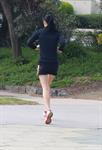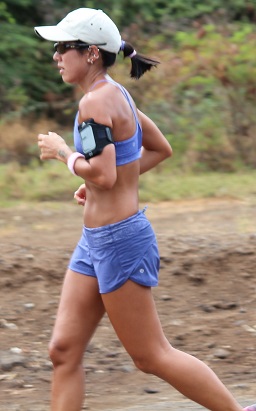
Learn how to improve your fitness!
- Live longer, healthier and smarter.
- Start any time, study from anywhere, learn at your own pace
- This course has been operating since 1985 -with regular revisions and updates; and tutoring from highly qualified fitness experts and health scientists
- 100hr self paced
COURSE STRUCTURE
The course is divided into 8 lessons as follows:
1. Reasons for Fitness – Basic components of physical fitness, reasons for fitness, fitness testing and evaluating endurance.
2. Understanding your body – Body structure, cardio respiratory system and aerobic/anaerobic energy.
3. Testing your fitness Part A – Types of fitness tests, differences due to age and gender and evaluating different types of fitness tests.
4. Exercises for specific purposes – Types of exercise, developing physique, basic conditioning exercises, and exercises for specific problems.
5. Nutrition and Weight control – Nutrition basics, weight control and planning a diet.
6. Endurance and Suppleness – Assessing how supple your body is, exercises that increase suppleness.
7. Home Medicine and First Aid – Basic first aid, acupressure and alternative vs mainstream medicine.
8. Designing an Exercise Program – Designing a program, assessing fitness and designing an appropriate program.
Eat Well, Sleep Well, and Exercise Properly

A good level of fitness can only be achieved when you take a holistic approach. Some people exercise well, and eat junk food. That approach is little different to eating well and never exercising.
You can do too little of anything; but you can equally do too much of anything. Excessive exercise can damage the body; and even exercising in the wrong place, using the wrong gear or wearing the wrong shoes and clothes can diminish the value or increase risks associated with exercise.
Consider what you wear, for example:
Clothing and footwear can aid or hinder movement in aerobic and most other forms of exercise. The most important thing about clothing for aerobic activities is that they are comfortable.
Clothing should be selected in terms of:
- The protection it offers from injury and the sun.
- Light conditions (bright or dull).
- Does it absorb moisture, or resist water absorption? - What you choose will depend on what type of activity you are doing. For example, moisture absorption can be important when you are sweating a great deal, whilst water-resistant jackets can be important when canoeing or white water rafting.
- Does it allow suitable freedom of movement? Does it allow suitable levels of support where required?
- Is it durable - will it stand up to the rigour of hard exercise, and stretching?
- Is it comfortable to wear - does it bunch or ride up, does it rub, etc?
- Does it have the right appearance for the activity you are carrying out (aesthetically suitable)? This is often dictated by current fashion trends.
Materials
Most fitness clothing is constructed with knitted fibres to permit adequate stretching. This knitted weave will therefore tear in the manner of ladders - similar to that experienced in stockings.
The most popular form of clothing for anyone participating in fitness is anything that is comfortable, warm (in cold periods) and that offers protection from winds. The sun factor is also a consideration and many clothing manufacturers state SPF factors for clothing. In competitive sports, the most significant textile products are elastene and spandex. Lycra ® is a product of Dupont and is a form of spandex developed as a superior quality product. Lycra is therefore blended with many other fibres (up to 90%) to produce various garments suitable for most sports. Some of the blends include lycra/wool, lycra/cotton, lycra/rayon, and lycra/linen. These spandex-related products are most popular for aerobic sports including swimming, cycling and aerobics.
Other sports clothing, such as football kits, tend to be made with nylon or polyester. Nylon has not traditionally been popular with sports due to its unbreathable reputation, the fact that it clings to the body, and also because it is generally considered hot and of a non-flexible character. New weaving blends now permit improved breathability. Additionally, this fibre exhibits low-staining (such as grass stains). Polyester is popular because it has tough resilience, good memory (stretches well and returns to the same shape repeatedly), it retains its colour, and is one of the few textiles that permits sublimation (printing on the material). It is available in a range of qualities from super lightweight to super heavyweight. Another popular form of polyester is the cloth with holes throughout, sometimes called athletic mesh - it stretches both ways, allows for excellent breathing of skin, but needs to be dried in the shade.
Footballers tend to prefer traditional material of cotton/polyester blends due to its strength, or 100% cotton though nowadays more advanced fabrics have replaced these.
Water-based sports such as rafting will require not only water tolerant clothing (e.g. lycra) but also waterproof clothing in cases where the body needs to remain dry.
Footwear
Suitable footwear for aerobic activity will depend on various things:
- The activity to be performed.
- The surface on which it is to be performed.
- The individual features of a person's foot (e.g. flat, neutral or high-arched).
Cushioning Versus Stability
There is usually a trade-off between these two features. A shoe with good cushioning will lose some degree of stability.
Pronation Problems
Many shoes these days are designed to account for this particular foot problem (pronation), where a foot tends to roll inwards. About 25% of people are believed to have this condition. It effectively results in a poor take-off platform, inefficient energy transfer, and increased risk of injury. Look for shoes with good motion control.
Some feet however, are not flexible enough to absorb a stress load. These feet need footwear with good shock-absorbing qualities rather than motion control.
Flexibility
Shoes need some degree of flexibility - too much or too little can reduce the wearer's ability to carry out particular activities/exercises.
Achilles Notch
This is a small notch in the upper rear ankle tab that contours to the ankle and Achilles tendon, offering better comfort.
Soles
Different materials and patterning will provide different degrees of grip. This can also change over time.
Shoe manufacturing companies tend to produce shoes specifically for different activities, such as for running, weightlifting, aerobics or circuit training. Some have produced cross-trainers which reportedly are suitable for a range of exercise routines. Each person will need to make their own mind up as to what is suitable for their specific need.
In general, footwear should be well fitting, provide suitable ankle support, and suitable grip. If you are not sure check with an instructor or the gym management for advice on suitable footwear to use. Some gyms and recreation facilities don't allow the use of black or dark-soled footwear, as they can leave streak marks on the floor.
New footwear can be purchased as often as every two months by regular aerobic participants and instructors. Shoes wear quickly and the sole can become slippery with less padding if activity is done more than three times a week. Wearing the same pair of shoes well past the use-by date can increase injury to the feet, ankles, shins, knees and the lower back. It is essential that footwear is replaced when needed.
WHAT NEXT?
Register to Study - Go to “It’s Easy to Enrol” box at the top of the page and you can enrol now
Get Advice – Email us at info@acsedu.co.uk OR
Use our FREE COUNSELLING SERVICE to contact a tutor
CLICK TO CONTACT US